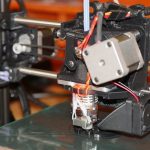
FDA approved “Bionic Man” retinal implant to treat certain types of blindness… but there’s no spy vision capability (yet)
Wednesday, August 30, 2017 by Isabelle Z.
http://www.futuresciencenews.com/2017-08-30-bionic-man-retinal-implant-just-approved-by-the-fda-to-treat-certain-types-of-blindness-but-theres-no-spy-vision-capability-yet.html

The FDA has just granted approval to Second Sight Medical Products to embark on a human clinical study of its newest visual prosthesis system. Known as Orion, the device is a newer iteration of the Sylmar, California-based company’s successful Argus II retinal implant product.
The Argus II gained approval in 2013, and it restores certain visual capabilities to people who have blindness that is caused by the inherited retinal degenerative illness Retinitis Pigmentosa (RP). The Orion expands on this ability, boasting the potential to help treat nearly every form of profound blindness.
The FDA’s conditional approval will allow two American sites to test the device on a handful of patients, but additional device testing will be required to gain full approval. The company also has to address some outstanding questions that the FDA has about the product. The clinical trial sites have been identified as The University of California at Los Angeles and Baylor College of Medicine in Houston.
The Orion will use a small camera that is mounted on glasses worn by the patient to send electrical pulses to an electrode that has been implanted inside the patient’s visual cortex in the back of the brain, and it could potentially help people who have been blinded by cancer, trauma, glaucoma and diabetic retinopathy.
The Argus II also uses a small camera that is mounted to special glasses, but it sends signals to an electric receiver containing 60 electrodes that has been implanted inside the patient’s retina instead of the brain. The signals are transmitted wirelessly in the form of small electrical pulses. The receiver passes signals along to the retina, through the optic nerve, and into the brain, which then interprets them as a visual picture.
The Argus II is currently offered in the U.S., Canada, Europe, and parts of the Middle East to treat retinitis pigmentosa. The hereditary condition affects around one out of every 4,000 people, causing them to lose their sight gradually until they become completely blind. This device is also being tested as a treatment for age-related macular degeneration, which affects more than 30 million individuals.
Argus II helps Montreal woman see her child for the first time
A Montreal woman who recently regained some of her sight thanks to the Argus II “bionic eye” recently spoke to the press about her experience. The Quebec mother of four received the implant in a four-hour procedure in March after losing her sight due to retinitis pigmentosa. She said she was interested in the implant because she wanted to get her vision back in order to see her youngest child for the very first time.
While the Argus II is not able to completely restore a person’s vision, it gives them the ability to recognize shapes and distinguish contours, allowing them to perform their daily activities. She said that seeing her youngest child was an incredible experience.
What is the future of bionic eyes?
Right now, the vision these devices can give people is rudimentary, and there is a bit of a reorientation process involved. Nevertheless, it has the power to change people’s lives for the better by allowing them to do things like cross the street unassisted and read large-print text.
Experts believe that future bionic eyes will not require externally mounted cameras and will instead be incorporated into the eye, and they could move past helping those with vision problems to enhancing vision in those with normal sight. As this technology progresses, could we see bionic eyes that can give people superhuman abilities like infrared night vision?
Sources include:
Tagged Under: Tags: age-related macular degeneration, Argus II, bionic eye, blindness, FDA, medical implants, Orion, retina, Retinitis pigmentosa, Second Sight, vision





